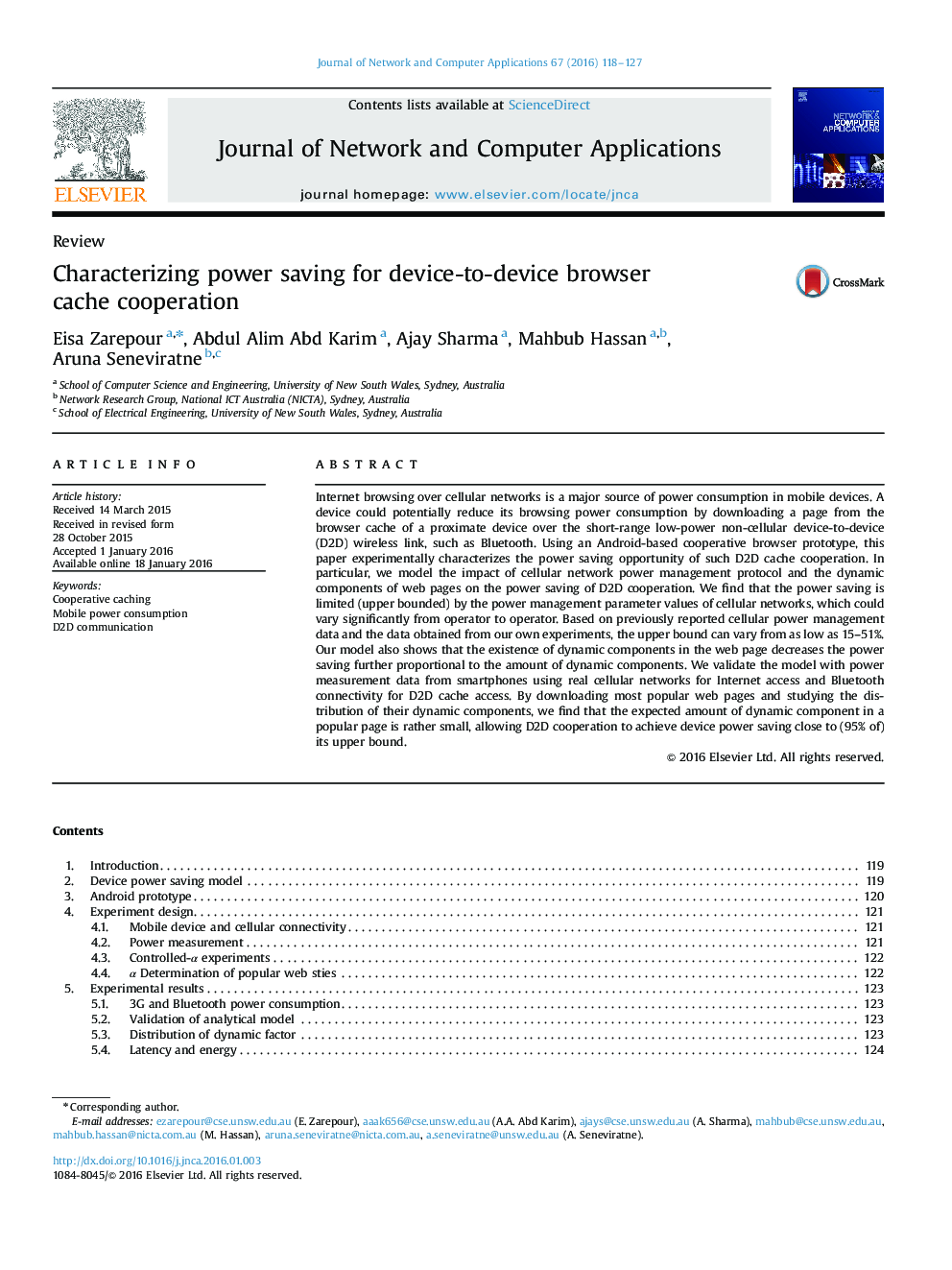| Article ID | Journal | Published Year | Pages | File Type |
|---|---|---|---|---|
| 459285 | Journal of Network and Computer Applications | 2016 | 10 Pages |
Internet browsing over cellular networks is a major source of power consumption in mobile devices. A device could potentially reduce its browsing power consumption by downloading a page from the browser cache of a proximate device over the short-range low-power non-cellular device-to-device (D2D) wireless link, such as Bluetooth. Using an Android-based cooperative browser prototype, this paper experimentally characterizes the power saving opportunity of such D2D cache cooperation. In particular, we model the impact of cellular network power management protocol and the dynamic components of web pages on the power saving of D2D cooperation. We find that the power saving is limited (upper bounded) by the power management parameter values of cellular networks, which could vary significantly from operator to operator. Based on previously reported cellular power management data and the data obtained from our own experiments, the upper bound can vary from as low as 15–51%. Our model also shows that the existence of dynamic components in the web page decreases the power saving further proportional to the amount of dynamic components. We validate the model with power measurement data from smartphones using real cellular networks for Internet access and Bluetooth connectivity for D2D cache access. By downloading most popular web pages and studying the distribution of their dynamic components, we find that the expected amount of dynamic component in a popular page is rather small, allowing D2D cooperation to achieve device power saving close to (95% of) its upper bound.
